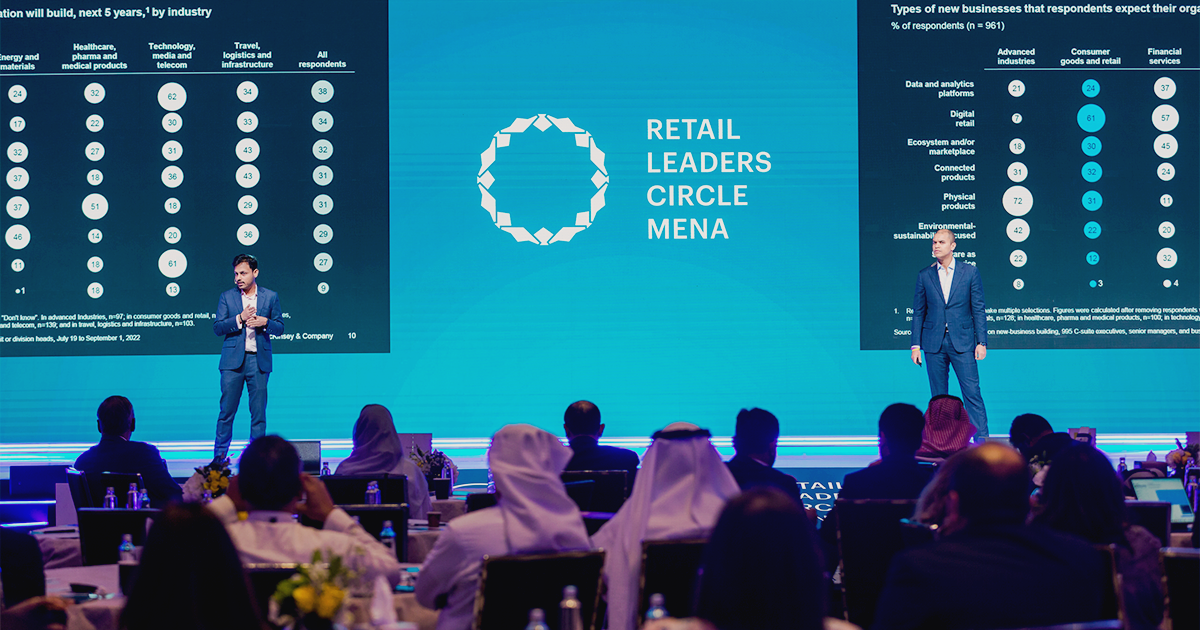During economic downturns many companies focus on cost savings and improving profitability. But could a downturn be an opportunity to grow? Experience shows that building new businesses during downturns can be very profitable, but companies need to be careful to set them up for success. These were discussed by McKinsey & Company’s Abdellah Iftahy, Partner, and Johnny Jha, Associate Partner.
Growth is the oxygen of the retail industry, and if you don’t invest early, it becomes much more challenging to keep up. Business growth can come from different sources: growth of the core, expansion into new categories, developing new channels, or creating completely new businesses.
Growth through business building is top of mind for business leaders. Almost 80% of global CEOs believe that this is a top five priority. Every dollar that a new business generates is double the value of what could be generated from the old business, because new businesses are typically optimized for high EBITDA. Global CEOs predict that 50% of the revenue that they’re going to generate is going to come from new business building.
But business building is not easy. Over the last ten years, only 20% of businesses have scaled successfully. This results from two factors: how the company sets up the new business and how the new business relates to the mothership.
To be successful in new business building, retailers need to know what their core strengths and their competitive advantage are and understand how this can be leveraged. Playing to existing advantages provides a higher certainty of success.
The second factor is building a culture that is separate from the culture at the parent company. Legacy cultures are wired for large organizations with strict disciplined processes. New businesses need to be more agile and need to attract a different type of talent from the parent. It’s critical to establish a new context for the new business.
The third factor is embedding the right data and technology in the new business. More automation means more cost efficiency. Smart use of data translates into a more commercially savvy value proposition for the end consumer.
Every organization has opportunities to build new businesses. Some could be at scale; others could be complementary to the core. What is critical is to reach end consumers that nobody else has, and really think about ideas that can be scalable, locally, and internationally.
 The value pools that traditionally resided in some areas are actually shifting, and it’s important to know where they are heading. Value is becoming very, very important and consumer engaging
The value pools that traditionally resided in some areas are actually shifting, and it’s important to know where they are heading. Value is becoming very, very important and consumer engaging 






